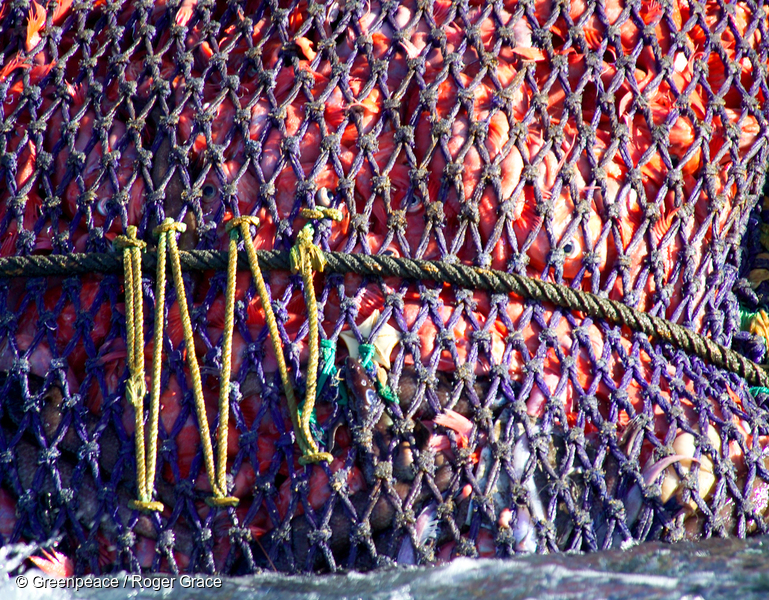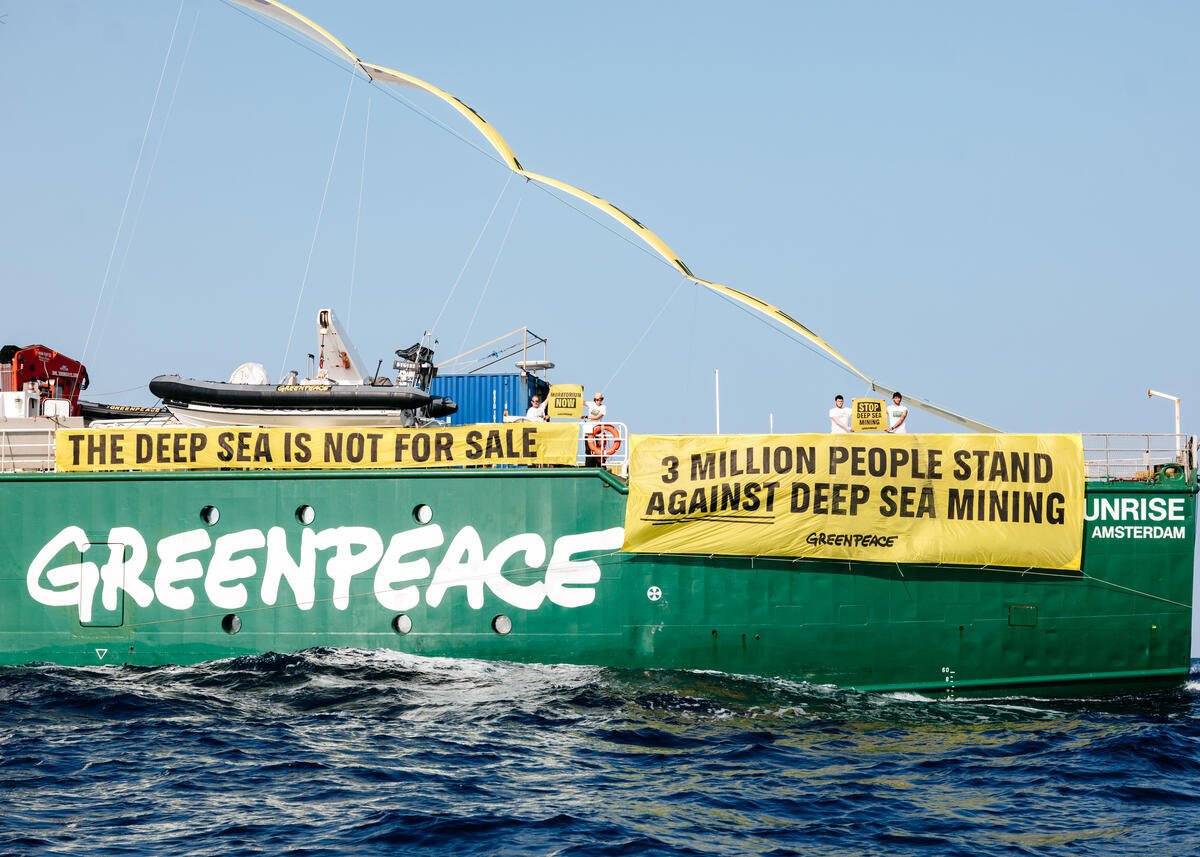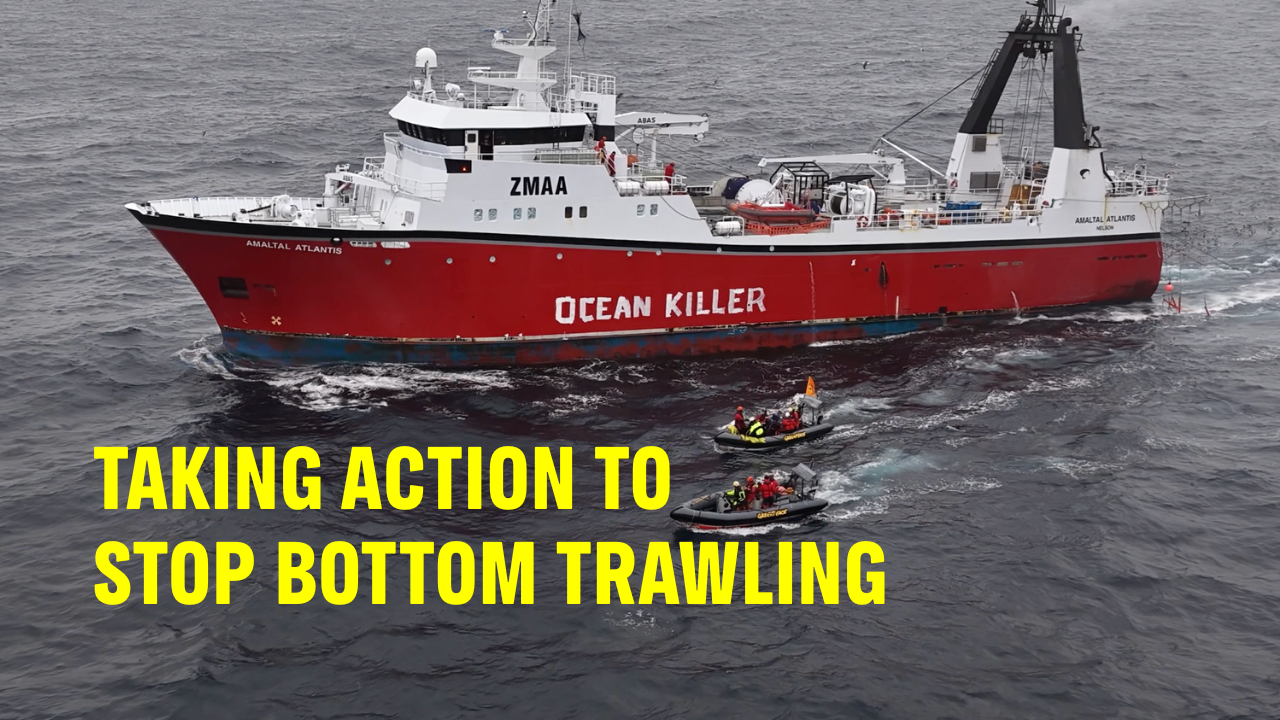The South Pacific Regional Fisheries Management Organisation (SPRFMO) met in Vanuatu in February. Greenpeace campaigner Jessica Desmond was there as an official observer for the duration, and explains what happened behind the scenes at the international fisheries meeting.
Five days in Vanuatu for work hardly seems like a tough sell. But spending five days as an environmental observer at an international fisheries meeting is a strange, often frustrating experience.
What is SPRFMO?
All the countries that fish in international waters in the South Pacific are part of the mouthful that is the ‘South Pacific Regional Fisheries Management Organisation’ (SPRFMO). This group gets together annually and makes the rules for fishing in this region.
It was set up with the purpose of ensuring the conservation of the South Pacific and that any use of these waters is sustainable. The group members are obligated to abide by a whole host of international laws and principles.
For example, members of SPRFMO are meant to adhere to the ‘precautionary principle’ – which in practice means if there is uncertainty about the impact of an activity on the environment, parties are obliged to err on the side of caution. This principle is widely accepted by all kinds of organisations, because it ensures protection over exploitation in environments we simply don’t know enough about.
At these meetings countries review and debate proposals on various rules (they call these conservation and management measures or ‘CMMs’). When SPRFMO started seven years ago they had four CMMs, now there are at least 20. They work in meeting sessions a lot of the time, with side conversations between countries happening from early morning to late in the evening.
In the room, the country delegates sit at the front, then there is space for observers. This is where Greenpeace comes in. Observers can be other interested parties – from fishing companies to environmental NGOs – that are granted the status to be at proceedings. They aren’t part of the discussions at the same level as the countries but they watch what is going on, and can ‘raise their flag’ to intervene in the discussions. At SPRFMO this year, we were sat just down from the High Seas Fishing Group – led by Andy Smith from Talleys.
What was New Zealand’s role at SPRFMO?
In between the plenary work we spend time talking to the various countries about their positions. This is commonly called lobbying. Lobbying is a loaded word, but that’s exactly what everyone is there to do: advocate for their views and the interests they represent. Countries are lobbying each other, industry groups are lobbying, we are lobbying. That’s part of our job as environmentalists.
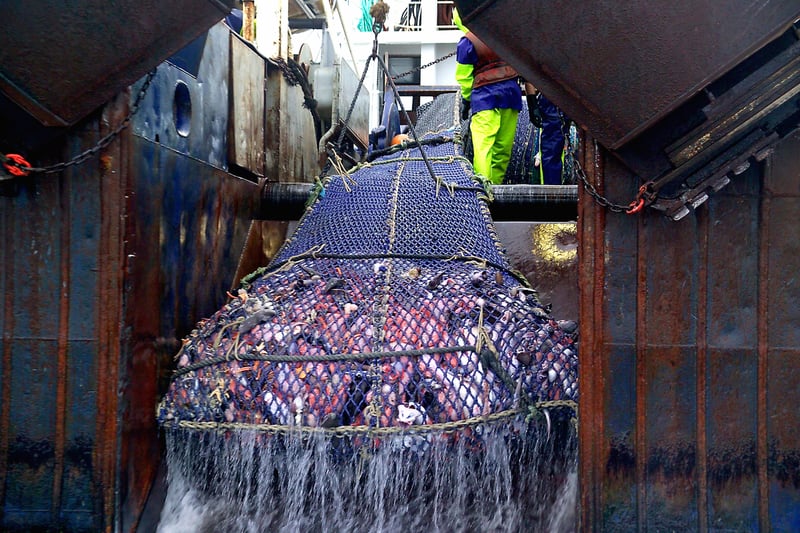
My view of the world, as with the rest of us at Greenpeace, is that we should have a thriving, healthy ocean. One that bursts with life and continues to be a playground for future generations. I also believe that the long term sustainability of this planet, the life and systems that live in the oceans, must be considered before any industry’s ability to make profit. So I’m there advocating to achieve those things. Corporate interests are there to protect the interests of their industry and shareholders. Country delegates are there to lobby for whatever positions they’ve been instructed to take by their government ministers.
The question to examine always is not whether parties are lobbying, it’s what they are lobbying about and on behalf of.
What I saw at SPRFMO in 2020 was really concerning to me as a New Zealander. Government officials from our country were advocating for industry protection over oceans preservation, and this is something we should all be worried about.
How New Zealand lobbied to get Talley’s off the blacklist
First we saw the New Zealand delegation arguing they had already taken strong action against Talley’s owned vessel Amaltal Apollo, which was caught bottom trawling in a protected area two fishing seasons ago. This ship was put on the international draft blacklist last year – and the SPRFMO commission said removing the vessel from the provisional list while a prosecution was not concluded would set a bad precedent.

The prosecution is still pending and has not concluded, but in this latest meeting in Vanuatu, the New Zealand delegation successfully lobbied for Talley’s to be removed from the naughty step. The ‘effective action’ New Zealand argued they had taken was said to be:
- Confiscation of the catch from the bottom trawls in a protected area. Approximately worth $88,000. To me this is merely confiscating proceeds of a crime, it’s like the police taking back a car you stole.
- Bonding the vessel for $3.5 million. However, an Official Information Act (OIA) request made last year revealed no money has been paid from Talleys to the Government for this supposed bond.
- And that the denial of a high seas permit. An OIA last year revealed that in the application for a high seas fishing permit for 2019 Amaltal has answered “no” to the question: “To the best of your knowledge, has the vessel referred to in this application been used to breach fisheries laws in any jurisdiction, including the high seas, in the last 10 years?” despite the pending court case against the company and the vessel’s skipper for illegal fishing by the vessel in 2018. They were denied the permit, in line with the New Zealand Fisheries Act, however the Amaltal fleet sister ships were permitted to fish the high seas last year.
These meetings are long, with many issues on the floor. Every country has to prioritise the issues they want to really fight for, pick their battles so to speak. Unfortunately though the situation regarding Amaltal remains unchanged from last year, there was little appetite to hold New Zealand’s feet to the fire, and the ship was removed from the draft black list.
This all happened in the pre-meeting. And things only went down-hill from there.
SPRFMOs job is to ensure conservation, and sustainable use of our oceans. Yet in the final day of the negotiation the New Zealand delegation expressed concern for the cost to the fishing industry over new rules to protect more marine ecosystems from bottom trawling1 (Talleys and Sanfords are the two NZ companies bottom trawling in the South Pacific). Luckily, unlike other international bodies, there is no need for a consensus to pass rules, so no risk of them throwing up anything like a veto. But their opposition did lead to the proposal being watered down.
The changes they opposed were designed to protect vulnerable marine ecosystems (VMEs). One of the things SPRFMO is explicitly charged to do is protect “vulnerable marine ecosystems” from significant or long-term impacts of fishing. VMEs are defined in a bunch of United Nations and Food and Agriculture Organisation conventions, but think ancient coral forests that underpin the health of ocean ecosystems. We know less about what’s in the ocean than we know about the surface of the moon, so while we can put some areas known to have VMEs off limits to fishing, we don’t know where they all are.
This is why we use a whole host of tools to protect them. One of them is the “move on rule”, this rule says if you’ve bought up a certain amount of coral in your net in a single trawl, you’re probably on top of a VME and you need to move on. In most fisheries management around the world this limit is set at 60kg (maybe two fish bins of stony coral). At SPRFMO the limit was set at 250kg! This is important because we know what comes up in the net is a fraction of what is destroyed below the surface. When 250kgs of corals is trawled up that’s 85 tonnes wiped out below.2
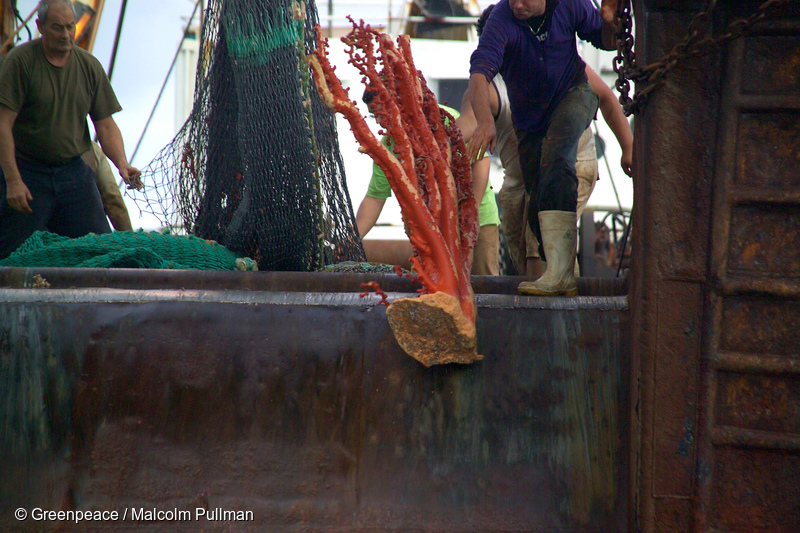
There was some scientific research on this presented by Australia that showed there might be less protection for VMEs than previously thought. This research is disputed by some of New Zealand’s research. Everyone agrees that more research needs to be undertaken.
In the meantime however, in line with the precautionary approach, the EU suggested the 250kg threshold to be lowered to 25kg. This proposal was supported vocally by the United States and Australia3. On the first day it was discussed the only opposition was from New Zealand – who argued that economic costs needed to be weighed against conservation outcomes. 4(NB: SPRFMOs mandate is to protect VMEs from significant adverse impacts from bottom fishing, not to only protect them when it doesn’t cost fishing companies too much.) The High Seas Fishing Group (HSFG) were also vocal about their concerns that it would no longer be financially viable to fish the area if they had to be more cautious about these vulnerable marine ecosystems5.
After hearing these claims we reviewed the data. Based on New Zealand’s own data, the best modelling would indicate that even if the threshold was reduced to only 5kg of coral triggering a move on rule, the threshold would only trigger 16 more times for every THOUSAND bottom trawling tows. There is no data at 25kg, 60kg nor, 80kg but logic would suggest these higher thresholds would produce even fewer move ons. What the strong rule does do is require more caution from the bottom trawlers bulldozing the South Pacific.
On the last day of negotiations, the delegations from Vanuatu joined New Zealand in expressing concern about the proposed rule. They both cited their concerns about the financial impacts on the fishing fleet6. The final measure was agreed at 80kg.
There is a lot of detail in this post and it’s not always straightforward information to digest. The main take-away for me, as a New Zealander and someone who cares about the Ocean, is that it’s more crucial than ever that we hold government and industry to account, and ensure our public servants are serving the public and not commercial interests.
Good democracies depend on transparency and accountability. They depend upon governments working to represent the rights of the many, and for the common good.
Our oceans represent the largest common good we have. In healthy oceans, we get a climate regulator, an oxygen provider, a home for billions of creatures, and a food basket for communities around the world. But when governments do not put the protection of our now struggling oceans above the profit margins of private companies, in the end we all lose. In my work as an oceans campaigner, I often see governments not advocating for the preservation of our shared home. For the sake of all of us, I truly hope in 2020 we can change that.
References:
- https://www.sprfmo.int/assets/0-2020-Annual-Meeting/Reports/COMM8-Meeting-Report-Final-10Mar2020.pdf (para 159, pg 14)
- Pitcher, Williams and Georgeson (2019) Progress with investigating uncertainty in the habitat suitability model predictions and VME indicator taxa thresholds underpinning CMM 03-2019, Pg. 14.
- https://www.sprfmo.int/assets/0-2020-Annual-Meeting/Reports/COMM8-Meeting-Report-Final-10Mar2020.pdf (para 146, pg 13.)
- https://www.sprfmo.int/assets/0-2020-Annual-Meeting/Reports/COMM8-Meeting-Report-Final-10Mar2020.pdf (para 144, pg 12.)
- https://www.sprfmo.int/assets/0-2020-Annual-Meeting/Reports/COMM8-Meeting-Report-Final-10Mar2020.pdf (para 147, pg 13.)
- https://www.sprfmo.int/assets/0-2020-Annual-Meeting/Reports/COMM8-Meeting-Report-Final-10Mar2020.pdf (para 159, pg 14)

